-
Windmill Web Design
-
The Designers Republic
-
A Quiet Intimacy Mirrors Distance
-
LIVE PERFORMANCE: Terre Thaemlitz
-
Arts Council England
Arts Council England is a government-funded body dedicated to promoting the performing, visual and literary arts in England. Since 1994, Arts Council England has been responsible for distributing lottery funding.
-
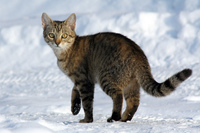 test 2
test 2
-
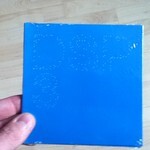 test
test
-
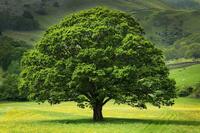 [Untitled]
[Untitled]
-
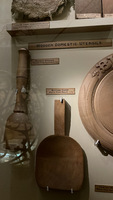 Plants for everyday use objects
Plants for everyday use objects Archaeologists have discovered the earliest evidence for woodworking, 1.5 million years ago belonging to Homo Erectussport telltale traces of acacia wood. Now our everyday objects like bats, utensils, boats etc. are all made of wood. Another everyday major object made out of plants is paper, which can be made almost any plant that contains cellulose fiber. The first plant-based paper was papyrus in Egypt in 3,000 BCE. It was made by slicing the papyrus plant lengthwise, and then laying the strips side-by-side.
-
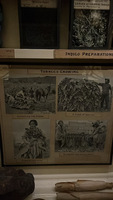 Tobacco plant
Tobacco plant Nicotiana tabacum is most widely grown commercially for tobacco production, but many other species have beautiful flowers and make excellent garden plants. The plant is grown in the tropical regions of America, India and Namibia and Australia. The tobacco seed is very small, so it must be started indoors. To germinate, it requires a temperature of at least 65 degrees. Seedlings are ready to be transplanted once they reach 8 inches in height. Tobacco plants can be harvested by cutting down the entire plant at once or by pulling individual leaves from the plant. Tobacco leaves are ready to harvest from the ground up.
-
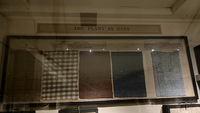 Plant as dyes
Plant as dyes Natural dyes have been used by our ancestors for thousands of years to colour fibres, fabrics, and other materials. Throughout history plants, insects, and minerals were used to create a variety of colours. There are different types of dyes like; mineral, vegetable and animal which are all made in different ways. A few of them that are found in the museum are stated below. Wall lichen is a mineral dye, that is found on rocvks of the sea coast and gives a yellow brown dye. Safflower is a rose colour which is obtatined from flowers in india and used as a dye. Another dye Indigo which give a blue colour and is is extracted from the leaves of the indigo plant which is a shrub that grows wild and is cultivated in tropical areas.
-
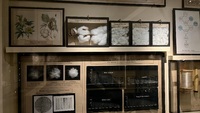 Plant in textiles
Plant in textiles Cotton, is one of the world’s leading agricultural crops. It is the product of several plats of genus Gossypium belonging to the mallow family. After flowering the pod is produced which contains three cells with several seeds in each. When it ripens, it splits open and exposes a mass of cotton enveloping the seed. Most of the seeds (cottonseed) are separated from the fibers by a mechanical process called ginning. Ginned cotton is shipped in bales to a textile mill for yarn manufacturing. The fibers can be made into a wide variety of fabrics ranging from lightweight voiles and laces to heavy sailcloth's and thick-piled velveteen's, suitable for a great variety of wearing apparel, home furnishings, and industrial uses.
-
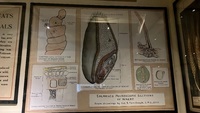 Plants as food
Plants as food Bread Wheat is believed to be a product of cultivation. It is a hybrid which has been obtained from a crossing of 'Wild Emmer' and 'Wild Einkorn' first produced in North Syria. Bread wheat was first domesticated in Asia around 10,000 years ago in the Caspian region of what is now Iran. There are about 5,000 cultivated varieties (cultivars) of bread wheat in current use. Other different types of British cereals are oats, barley etc. The images show an enlarged Microscopic section of wheat. The images also contain of diferent typres of cereals and grains.
 test 2
test 2  test
test  [Untitled]
[Untitled]  Plants for everyday use objects Archaeologists have discovered the earliest evidence for woodworking, 1.5 million years ago belonging to Homo Erectussport telltale traces of acacia wood. Now our everyday objects like bats, utensils, boats etc. are all made of wood. Another everyday major object made out of plants is paper, which can be made almost any plant that contains cellulose fiber. The first plant-based paper was papyrus in Egypt in 3,000 BCE. It was made by slicing the papyrus plant lengthwise, and then laying the strips side-by-side.
Plants for everyday use objects Archaeologists have discovered the earliest evidence for woodworking, 1.5 million years ago belonging to Homo Erectussport telltale traces of acacia wood. Now our everyday objects like bats, utensils, boats etc. are all made of wood. Another everyday major object made out of plants is paper, which can be made almost any plant that contains cellulose fiber. The first plant-based paper was papyrus in Egypt in 3,000 BCE. It was made by slicing the papyrus plant lengthwise, and then laying the strips side-by-side. Tobacco plant Nicotiana tabacum is most widely grown commercially for tobacco production, but many other species have beautiful flowers and make excellent garden plants. The plant is grown in the tropical regions of America, India and Namibia and Australia. The tobacco seed is very small, so it must be started indoors. To germinate, it requires a temperature of at least 65 degrees. Seedlings are ready to be transplanted once they reach 8 inches in height. Tobacco plants can be harvested by cutting down the entire plant at once or by pulling individual leaves from the plant. Tobacco leaves are ready to harvest from the ground up.
Tobacco plant Nicotiana tabacum is most widely grown commercially for tobacco production, but many other species have beautiful flowers and make excellent garden plants. The plant is grown in the tropical regions of America, India and Namibia and Australia. The tobacco seed is very small, so it must be started indoors. To germinate, it requires a temperature of at least 65 degrees. Seedlings are ready to be transplanted once they reach 8 inches in height. Tobacco plants can be harvested by cutting down the entire plant at once or by pulling individual leaves from the plant. Tobacco leaves are ready to harvest from the ground up. Plant as dyes Natural dyes have been used by our ancestors for thousands of years to colour fibres, fabrics, and other materials. Throughout history plants, insects, and minerals were used to create a variety of colours. There are different types of dyes like; mineral, vegetable and animal which are all made in different ways. A few of them that are found in the museum are stated below. Wall lichen is a mineral dye, that is found on rocvks of the sea coast and gives a yellow brown dye. Safflower is a rose colour which is obtatined from flowers in india and used as a dye. Another dye Indigo which give a blue colour and is is extracted from the leaves of the indigo plant which is a shrub that grows wild and is cultivated in tropical areas.
Plant as dyes Natural dyes have been used by our ancestors for thousands of years to colour fibres, fabrics, and other materials. Throughout history plants, insects, and minerals were used to create a variety of colours. There are different types of dyes like; mineral, vegetable and animal which are all made in different ways. A few of them that are found in the museum are stated below. Wall lichen is a mineral dye, that is found on rocvks of the sea coast and gives a yellow brown dye. Safflower is a rose colour which is obtatined from flowers in india and used as a dye. Another dye Indigo which give a blue colour and is is extracted from the leaves of the indigo plant which is a shrub that grows wild and is cultivated in tropical areas. Plant in textiles Cotton, is one of the world’s leading agricultural crops. It is the product of several plats of genus Gossypium belonging to the mallow family. After flowering the pod is produced which contains three cells with several seeds in each. When it ripens, it splits open and exposes a mass of cotton enveloping the seed. Most of the seeds (cottonseed) are separated from the fibers by a mechanical process called ginning. Ginned cotton is shipped in bales to a textile mill for yarn manufacturing. The fibers can be made into a wide variety of fabrics ranging from lightweight voiles and laces to heavy sailcloth's and thick-piled velveteen's, suitable for a great variety of wearing apparel, home furnishings, and industrial uses.
Plant in textiles Cotton, is one of the world’s leading agricultural crops. It is the product of several plats of genus Gossypium belonging to the mallow family. After flowering the pod is produced which contains three cells with several seeds in each. When it ripens, it splits open and exposes a mass of cotton enveloping the seed. Most of the seeds (cottonseed) are separated from the fibers by a mechanical process called ginning. Ginned cotton is shipped in bales to a textile mill for yarn manufacturing. The fibers can be made into a wide variety of fabrics ranging from lightweight voiles and laces to heavy sailcloth's and thick-piled velveteen's, suitable for a great variety of wearing apparel, home furnishings, and industrial uses. Plants as food Bread Wheat is believed to be a product of cultivation. It is a hybrid which has been obtained from a crossing of 'Wild Emmer' and 'Wild Einkorn' first produced in North Syria. Bread wheat was first domesticated in Asia around 10,000 years ago in the Caspian region of what is now Iran. There are about 5,000 cultivated varieties (cultivars) of bread wheat in current use. Other different types of British cereals are oats, barley etc. The images show an enlarged Microscopic section of wheat. The images also contain of diferent typres of cereals and grains.
Plants as food Bread Wheat is believed to be a product of cultivation. It is a hybrid which has been obtained from a crossing of 'Wild Emmer' and 'Wild Einkorn' first produced in North Syria. Bread wheat was first domesticated in Asia around 10,000 years ago in the Caspian region of what is now Iran. There are about 5,000 cultivated varieties (cultivars) of bread wheat in current use. Other different types of British cereals are oats, barley etc. The images show an enlarged Microscopic section of wheat. The images also contain of diferent typres of cereals and grains.